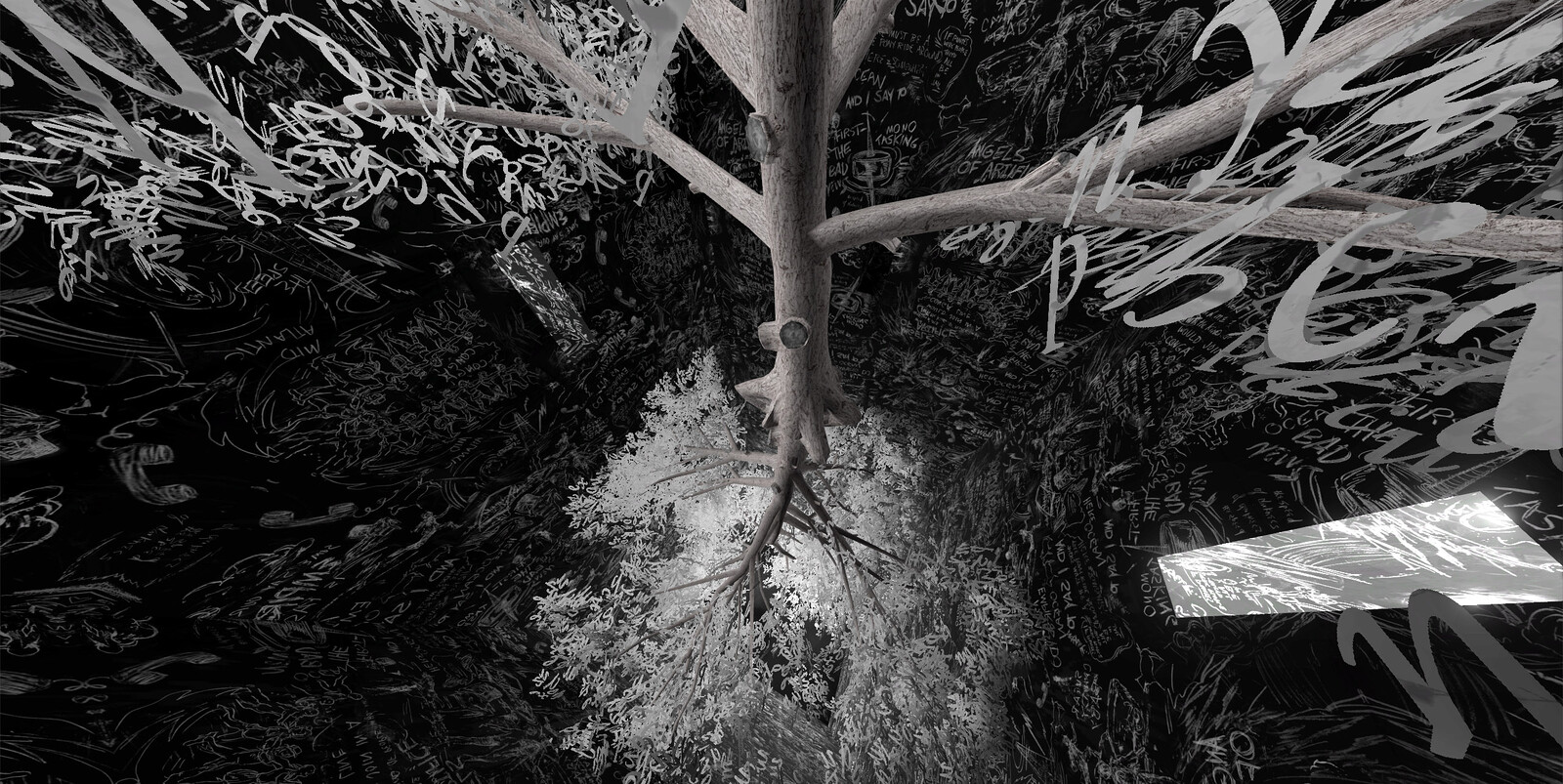La Camera Insabbiata
Best VR Experience at the 74th Venice International Film Festival
November 18, 2017–February 25, 2018
No. 181 Zhongshan N. Road Sec. 3
Taipei 10461
Taiwan
Taipei Fine Arts Museum (TFAM) presents La Camera Insabbiata at its outdoor plaza. This virtual reality work, collaborated by American multi-media artist and musician Laurie Anderson and Taiwanese new media artist Hsin-Chien Huang, was evolved and expanded from previous piece Chalkroom exhibited at Massachusetts Museum of Contemporary Art. The edition on view at TFAM is the first time La Camera Insabbiata is shown after awarded Best VR Experience at the 74th Venice International Film Festival.
Unlike the usual mission-based VR interactive structure, La Camera Insabbiata creates exclusive worlds based on personal experiences and memories. For the exhibition, Laurie Anderson recreated an site-specific painting inside the installation. Anderson states “I make art so I can feel free and understand who I am.” Co-creator Huang mentions in his statement that “VR offers possibilities for full liberation. ‘Imagination is the only limitation’”. La Camera Insabbiata will bring intimate, exclusive and tranquil experiences in abstract and unconventional ways.
La Camera Insabbiata offers a virtual thinking space that surpasses thoughts, deconstructs words and overturns dreams for the audience. The exhibition space stands at TFAM’s outdoor plaza like a dark container. It includes a VR space for four participants. For the virtual journey, participants can travel through eight rooms, including The Cloud Room, The Anagram Room, The Dog Room, The Water Room, The Sound Room, The Dance Room, The Writing Room, and The Tree Room. Surrounded by murmurs by Laurie Anderson in the background, viewers can wander through story clusters, leap across otherworldly and dreamy rooms, as well as fall through layers of signs and numbers. VR goggles are hanged in the space, with control handles on handrail, enabling the participants an experience that gives in all of their senses to technology facilitation. For fifteen minutes, viewers can navigate with their handles in panoramic corridors, halls, and the eight rooms, made of blackboards, chalks, handwritten signals and numbers. Landscapes in panoramic space breaks through reasonable, gravitational, and spatial logics, and separates from reality. Everyone can sculpture personal, intimate and unique works with voices and sounds, or quietly observe lines and colors to sprawl and extend.
Registration in advance is required. For more information, click here.



